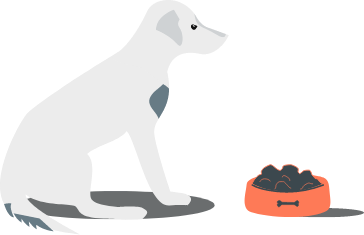
After sterilisation, a dog tends to eat more, whereas its energy requirements diminish by 25% to 30%1
If allowed to eat at will after sterilisation, your dog’s weight can increase by over 30% after 5 months1.
Your dog is the most likely to put weight on, during the 2 years following the surgery2.
About 50% of pet owners feed their dog without measuring what they give.
The health and well-being of your dog are related to maintenance of an ideal body weight.
1. I. Jeusette, et al. Effect of ovariectomy and ad libitum feeding on body composition, thyroid status, ghreling and leptin plasma concentrations in female dogs. Journal of Animal Phsiology and Animal Nutrition 90 (2006)
2. Yam PS, et al. Impact of canine overweight and obesity on health-related quality of life. Prev Vet Med 2016; 127: 105 -112.
![Group 921.png]() Weight gain comparison between man and dog
Weight gain comparison between man and dog
When a small dog gains 250 g, it is like a man of 70 kg gaining 3.5 kg. When that same dog is more than 2 kg overweight, its weight has increased by 40%! At this stage, it is called «morbid» obesity as it is associated with health problems. This is what happens when a 70 kg individual approaches 100 kg.
The quantity of kibbles to be given each day should be carefully assessed. About 50% of pet owners feed their dog without measuring what they give. To maintain your neutered dog at a healthy weight, it is nevertheless necessary to limit the amount of food they consume every day. It is not appropriate to provide food every time it is requested! In order for your dog to remain slim, stick to the daily ration recommended by your veterinarian.
Carefully measure the amount to be given in a measuring cup before feeding your dog, or even better weigh the kibbles on a kitchen scale to avoid any risk of error. A few dozen extra grams of kibbles each day can weigh heavily in the calorie balance, especially if it is a small dog.
*Amount based on the feeding guidelines for our Veterinary HPM Neutered range for Adult dog . Please refer to our feeding recommendations available on our product pages or product packaging.

Feed your dog in a bowl adapted to your dog’s ration size. It has indeed been shown that the larger the bowl, the greater the tendency of owners to overfeed their dogs3
3. Murphy M, et al. Size of food bowl and scoop affects amount of food owners feed their dogs. J Anim Physiol a Anim Nutr 2012; 96: 237-241
In order for the dog to have a chance to remain at its ideal weight throughout life, it is obviously necessary that the whole family adheres to this code of conduct towards the dog. If the children spend their time feeding their dog too much or the dog systematically finishes the children's plates.
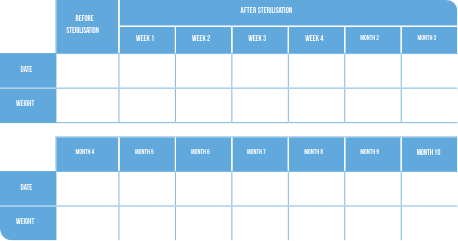 Closely monitor the evolution of your dog's weight after neutering, weigh it at least twice a month. It is always easier to intervene early to rectify the situation.
Closely monitor the evolution of your dog's weight after neutering, weigh it at least twice a month. It is always easier to intervene early to rectify the situation.
Weighing should always be done at the same time and on the same scale. The scale should be sensitive enough to identify differences of tens of grams when weighing a small dog. Do not hesitate to ask your vet if you can come regularly to the clinic to weigh your dog. Similarly, if you find that the weight of your dog is slowly but surely increasing, talk to your veterinarian who will advise you about your dog’s diet, according to its age, breed and lifestyle.
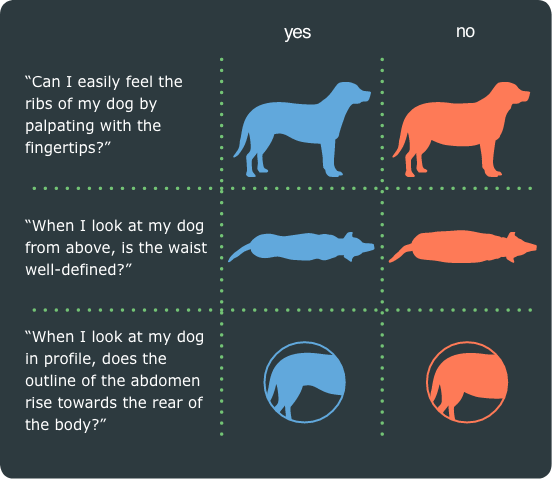
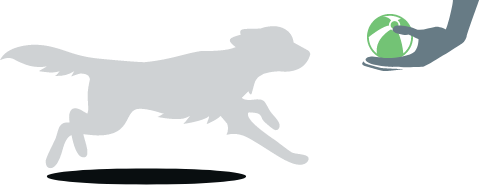
Lack of exercise promotes weight gain. To keep your dog at its ideal weight, it is necessary to encourage it to expend energy every day. The proportion of dogs living in apartments which are overweight is greater than for dogs living outside, but do not believe it is enough to simply put your dog in the garden so that it will exercise!
Try at least 30 minutes of exercise with your dog per day.
![Group 1012.png]() "After sterilisation the energy requirement is reduced by more than 20%1
"After sterilisation the energy requirement is reduced by more than 20%1
The option of simply reducing the usual ration you give your cat is to be avoided: it may feel very frustrated at being on a severely reduced ration and will soon be begging for more food. In addition, a significant dietary restriction may also expose the cat to nutritional deficiencies. It must receive all nutritional components essential to its health in sufficient quantity."
1. Yuka Mitsuhashi, Amy J. Chamberlin, Karen E. Bigley and John E. Bauer/ Maintenance energy requirement determination of cats after spaying. British Journal of Nutrition (2011), 106, S135-S138


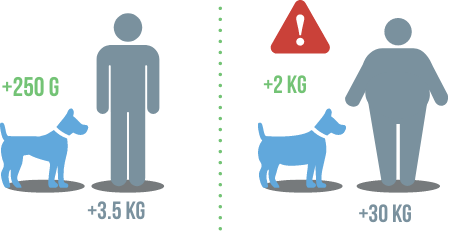 Weight gain comparison between man and dog
Weight gain comparison between man and dog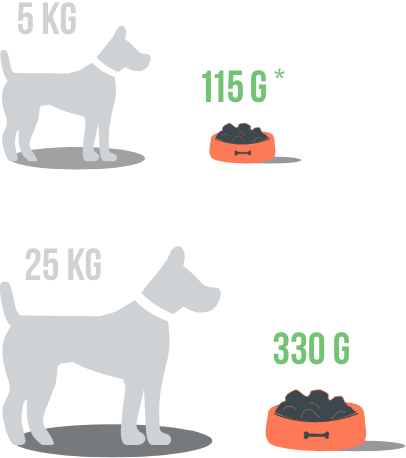
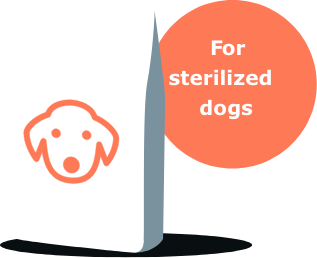 "After sterilisation the energy requirement is reduced by more than 20%1
"After sterilisation the energy requirement is reduced by more than 20%1